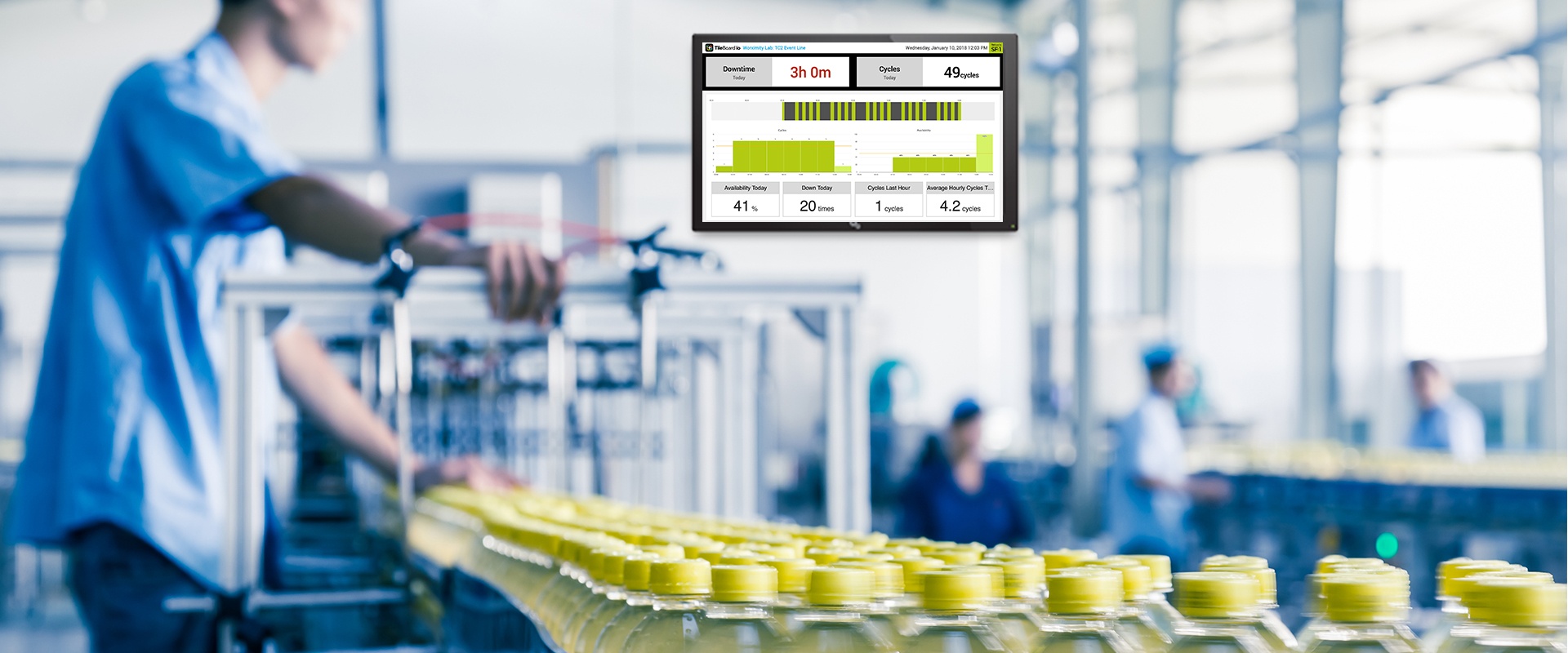To be effective in today’s rapidly changing environment, managers must have excellent tools and techniques to help guide decision-making. This has never been more evident than the need for managers to respond to the sudden outbreak of COVID-19. Shifts in consumer demand have been both sudden and extreme, causing store shelves to empty overnight. Those companies able to respond quickly and effectively are establishing themselves as industry leaders.
Worximity can help. By analyzing OEE and its components, managers can pinpoint the exact areas restricting production, develop plans to remove those restrictions, and implement the changes quickly. Our Smart Factory analytics software provides the data and information you need for making those changes. Worximity is here to help, and, should you have questions, our technical consultants are ready to work with you.
Worximity, a leader in helping manufacturers improve performance, produces a complete suite of real-time data collection and analysis systems. Throughput improvement based on Worximity's Smart Factory analytics gives managers the tools they need to increase throughput and generate increased profits.
Throughput vs. Profits
In its simplest form, throughput is defined as the number of good units produced through a manufacturing operation per unit of time. Thus, if a filling operation can fill 10 cans per minute of a good product, then the throughput is 10 cans per minute. Typically, allowances would be made for downtime, rejects, wait times, and other variables, but for our purposes, we can assume these factors have been taken into account.
Profit, on the other hand, is based on the sales of the plant less the associated costs. In turn, what the plant sells is dependent on the total volume of good products going into finished inventory. Thus, assuming everything that is produced is sold, what the plant can manufacture and move into finished goods is what the plant can sell. Profit, therefore, is a function of the total throughput of the plant itself.
As an example, assume we achieve a 10 percent improvement in throughput for a filling machine (filler) under two situations: In case one, the filler is not a constraint on total plant throughput, and in case two, the filler is the constraining process.
Case One
Assume there is a 10 percent improvement in throughput, meaning the line supervisor can run the filler at 11 cans per minute rather than 10. This increase improves the productivity of this operation. However, because this operation is not a constraint on plant throughput, the total production volume of the plant remains the same, and there is no impact on plant profit.
Case Two
In the second case, assume the filler is the constraining operation for the entire plant. Thus, the plant's total production is limited by how many cans can be filled per unit of time. Because the machine can only produce 10 cans per minute, the plant throughput is limited by that number. Other operations in the plant must pace themselves to match the filler.
Because the filler is the constraint, we can expect a 10 percent increase in throughput, meaning that 10 percent more products flow out of the plant. Other processes must then adjust to a higher volume. This increase translates into both an increase in sales and an increase in profits.
This example shows two things. First, increasing throughput at non-constraint processes generally does not affect total plant output and consequently has no impact on profits. Second, when planning an improvement, the first step is to identify the plant's primary constraining process. Then, improvements at the constraint can be converted into increased sales and better profits.
Throughput is one of the most important measures of a plant’s performance. Once throughput is known, net profit can be calculated:
Net profits = throughput - operating expenses.
Increases in throughput can then be translated into improved profits. If throughput can be increased while controlling operating expenses, profits will increase. Worximity has the tools and experience to help producers increase throughput and, ultimately, profits.
For example, Voltigeurs Farm, a leading poultry processor, applied Worximity's Smart Factory analytics to increase poultry throughput by 90,000 units per month. This increase resulted in improvements in both sales and profit.
Apply High-Tech Solutions to Improving Throughput and Profit
Companies seeking to improve operations should first identify the process step representing the most significant constraint to overall factory throughput. This constraining process should then be the first area of study for any improvement program.
Worximity has extensive experience supporting improvement programs directed at operations identified as being process constraints. When you partner with Worximity and apply our Smart Factory analytics, critical performance measures are used to identify and implement improvements. The system is then used to monitor the impact of changes on throughput, meaning these improvements will be reflected in the performance measures. Because the changes are being implemented at a constraining operation, the upgrades will have a positive effect on sales and profits.
For example, again assuming a constraint at the filler, using Worximity's giveaway monitoring tool, opportunities for improvement can be identified. Problem solutions can then be developed by analyzing filling overages and out-of-spec products. The result is increased throughput, both through the process and the total plant. Ultimately, this translates to higher sales and greater profits.
Throughput and profit are both essential to the overall operating results of any manufacturing operations. Focusing on constraining processes when dedicating resources to improvement programs can pay off by helping to improve both throughput and the bottom line. Worximity has deep experience working with companies to drive profits through focused improvement programs. Contact Worximity today to schedule a demo.
















